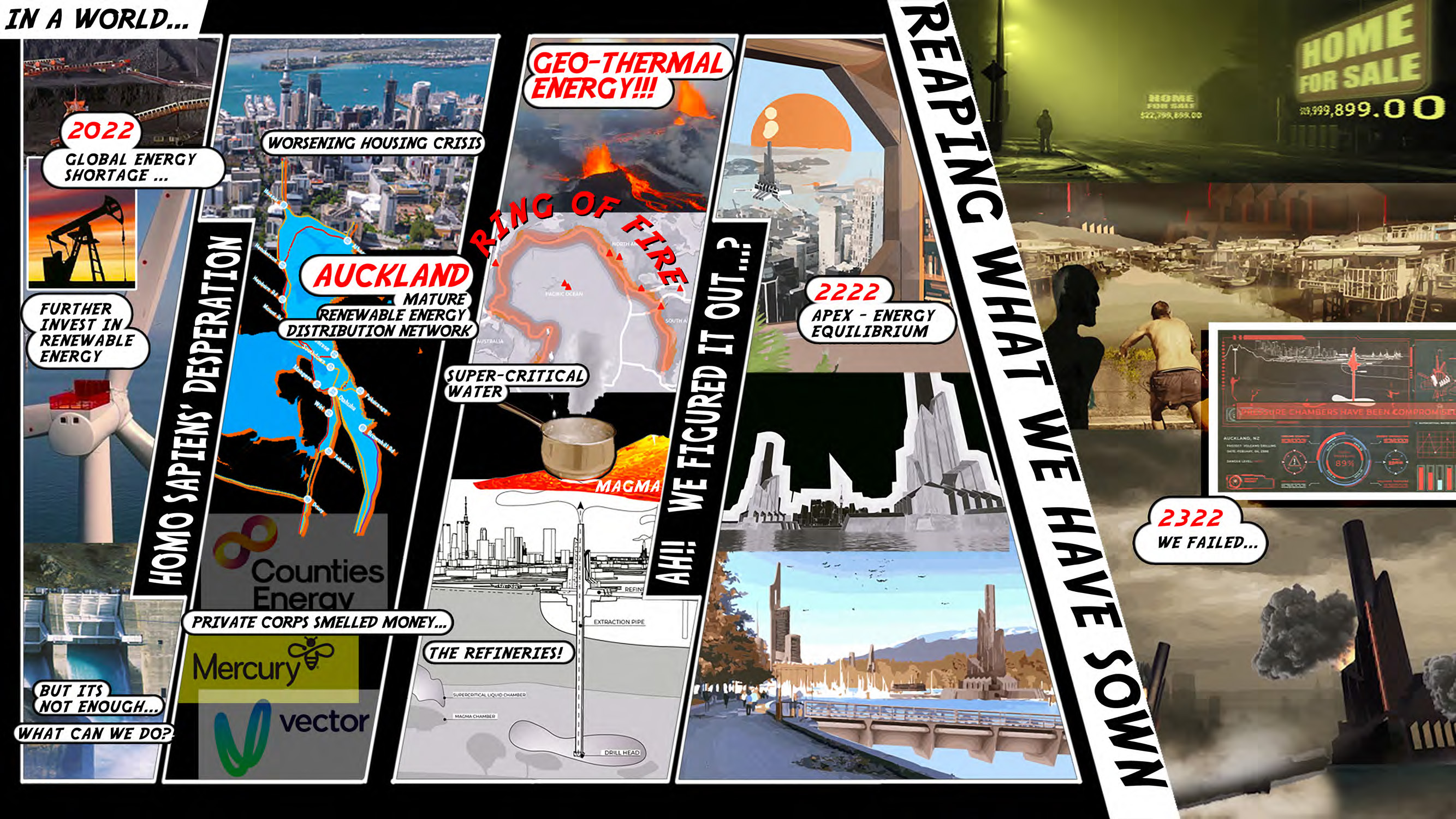Yiran
(Shirley)
Yao
Manufactured Ecologies in the Post Anthropocene:
Manufactured Ecologies in the Post Anthropocene:
Fantastic Niko
Hi friends,
I live in Auckland, New Zealand. Yes, human beings were wiped out by the frequent volcanic eruptions and the poisonous gases and smoke. It was their excessive exploitation of thermal energy in the supercritical water near the magma chambers, that caused this catastrophic inhabitable environment themselves. The remnants of their large industrial buildings, however, became the perfect habitat for us Bush Giant Dragonflies. The rather intact concrete foundation walls have been collecting rainwater for many centuries, and the build-ups of sediments became a rich base for a flourishing wetland biome. The cavernous zone in between ruins also provided shelter against our predators, such as the falcon. The volcano eruptions are accompanied by an increase in oxygen levels in the atmosphere, making us grow larger. The lack of predators in our adult phase and the abundance of oxygen pushed us into a new round of physiological development. For example, we grew larger and adopted larger clamp-like forearms, and flexible pincers to trap the prey. For strengthening our exoskeleton, we also extract iron and copper hydroxide from the cuticle. Combing with the temperature reaction of being an ectotherm in the Post-Anthropocene world, my skin colour turned to this blueish-purple iridescent pigment in time.
Despite the nice and livable environment protected by the cavernous zone, we are still being hunted when we were living underwater in our larvae phase of life. Many of us died as a snack for fish and turtles. I survived, but it wasn’t easy. Summer was always nice, but once the temperature drops, the cordyceps (aka the zombie fungus), would release their spores in the air, attacking the dragonflies' neuro system. They are the ultimate predator for us dragonflies. We are raised as fighters, but the cordyceps can take us down without a fight. Luckily, they only live in the darkest spot in the building ruins. So beware of the darkness!
Yours sincerely,
Niko the dragonfly.
I live in Auckland, New Zealand. Yes, human beings were wiped out by the frequent volcanic eruptions and the poisonous gases and smoke. It was their excessive exploitation of thermal energy in the supercritical water near the magma chambers, that caused this catastrophic inhabitable environment themselves. The remnants of their large industrial buildings, however, became the perfect habitat for us Bush Giant Dragonflies. The rather intact concrete foundation walls have been collecting rainwater for many centuries, and the build-ups of sediments became a rich base for a flourishing wetland biome. The cavernous zone in between ruins also provided shelter against our predators, such as the falcon. The volcano eruptions are accompanied by an increase in oxygen levels in the atmosphere, making us grow larger. The lack of predators in our adult phase and the abundance of oxygen pushed us into a new round of physiological development. For example, we grew larger and adopted larger clamp-like forearms, and flexible pincers to trap the prey. For strengthening our exoskeleton, we also extract iron and copper hydroxide from the cuticle. Combing with the temperature reaction of being an ectotherm in the Post-Anthropocene world, my skin colour turned to this blueish-purple iridescent pigment in time.
Despite the nice and livable environment protected by the cavernous zone, we are still being hunted when we were living underwater in our larvae phase of life. Many of us died as a snack for fish and turtles. I survived, but it wasn’t easy. Summer was always nice, but once the temperature drops, the cordyceps (aka the zombie fungus), would release their spores in the air, attacking the dragonflies' neuro system. They are the ultimate predator for us dragonflies. We are raised as fighters, but the cordyceps can take us down without a fight. Luckily, they only live in the darkest spot in the building ruins. So beware of the darkness!
Yours sincerely,
Niko the dragonfly.
















